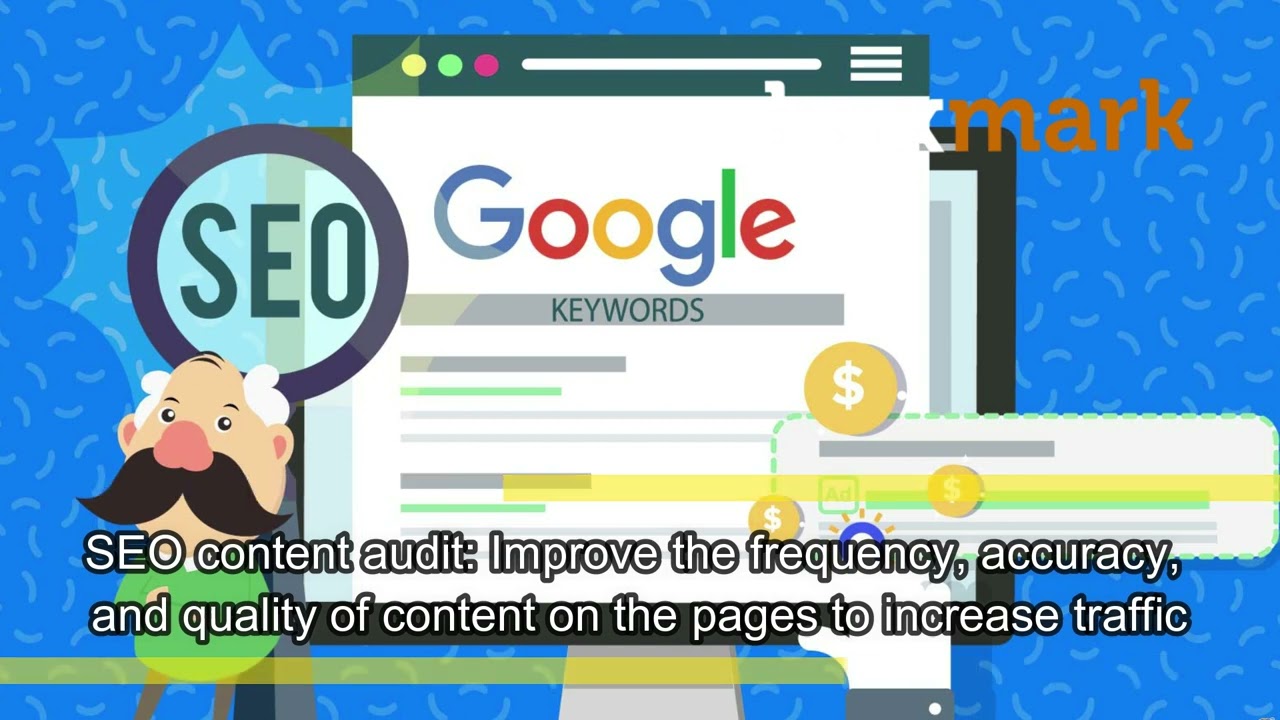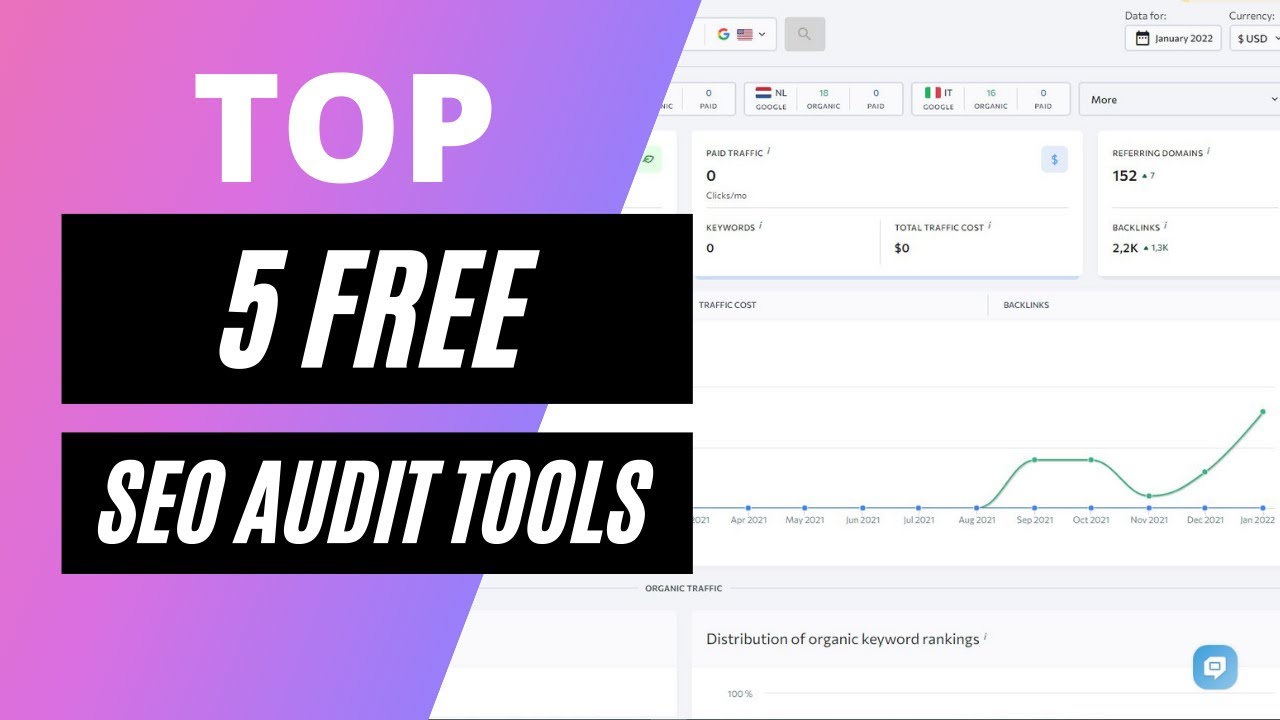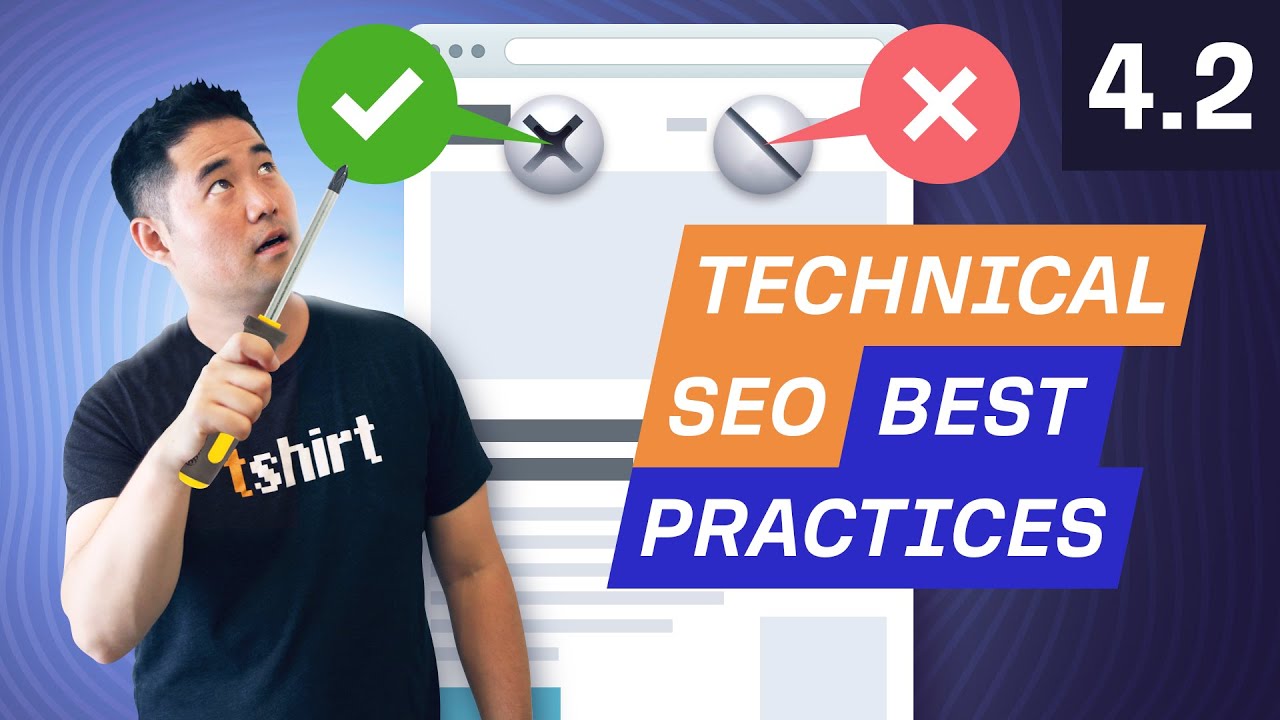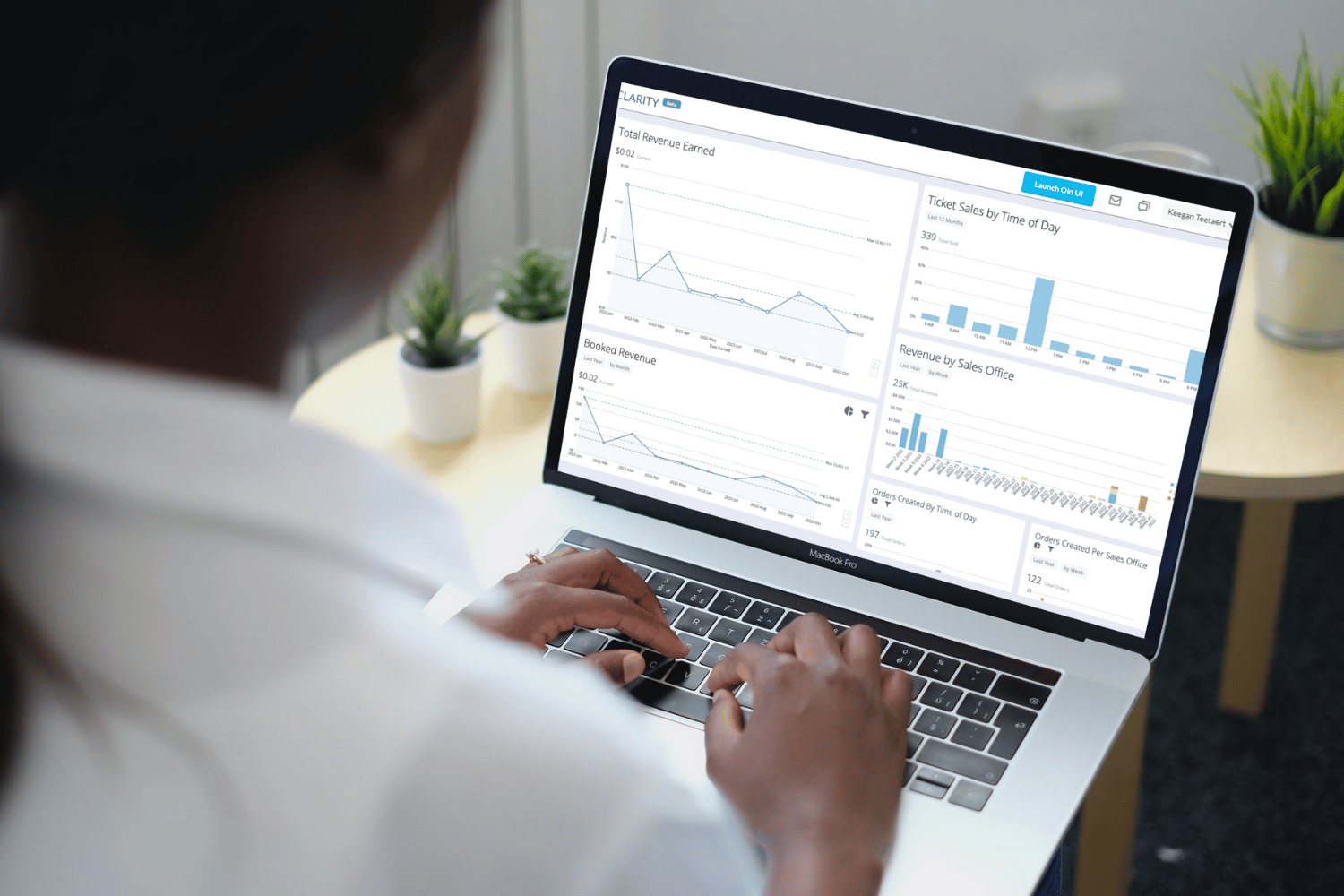In the digital age, having a strong online presence is crucial for businesses and individuals alike. Search engine optimization(SEO) plays a pivotal role in ensuring that your website ranks well in search engineresults and attracts organic traffic. To achieve optimal SEOperformance is to perform SEO auditis essential.
An SEOaudit allows you to assess various elements of your website, identify areas for improvement, and develop an actionable plan to enhance your website's visibility and rankings. In this article, we will delve into the process of performing an SEO audit and provide you with a comprehensive guide to optimizing your website for search engines.
What Is An SEO Audit?

A Basic (Yet Powerful) Technical SEO Audit for Beginners
An SEO audit is a systematic evaluation of a website's performance and adherence to SEO best practices. It involves analyzing various factors that impact a website's search engine rankings, organic traffic, and overall visibility. The purpose of an SEO audit is to identify areas of improvement and develop a strategic plan to optimize the website for search engines.
This comprehensive assessment examines aspects such as website structure, on-page elements, contentquality, technical factors, backlink profile, and analytics metrics. By conducting an SEO audit, website owners can gain valuable insights into their site's SEO health and make informed decisions to enhance its visibility and rankings in search engine results pages.
Why Is An SEO Audit Important?

Why SEO Audit is Important? | SEO Tips
An SEO audit is important for several reasons:
- Identify Optimization Opportunities -An SEO audit allows you to uncover areas of your website that need improvement. By analyzing various SEO factors, you can identify optimization opportunities to enhance your website's visibility, rankings, and organic traffic.
- Ensure Adherence to Best Practices -Search engine algorithms are constantly evolving, and SEO best practices change over time. Conducting an SEO audit helps ensure that your website is up to date with the latest guidelines and follows the recommended practices to avoid penalties and maintain a strong online presence.
- Improve User Experience-SEO and user experience go hand in hand. By conducting an audit, you can assess factors such as website speed, mobile-friendliness, and content quality, which all contribute to a positive user experience. By improving these aspects, you can increase user satisfaction and engagement on your website.
- Optimize Keyword Strategy -An SEO audit allows you to evaluate the effectiveness of your keyword strategy. By analyzing keyword usage, relevance, and competition, you can refine your keyword targeting and ensure that your content aligns with the search intentof your target audience.
- Stay Ahead of Competitors -The online landscape is competitive, and staying ahead of your competitors is crucial. An SEO audit helps you assess your competitors' strategies, identify their strengths and weaknesses, and leverage that information to improve your own website's performance and outrank them in search engine results.
- Track Progress and Measure Results -Regularly performing SEO audits allow you to track your progress over time. By monitoring key metrics and analytics data, you can measure the impact of your optimization efforts, identify trends, and make data-driven decisions to further improve your website's SEO performance.
Areas An SEO Audit Will Cover
During an SEO audit, several key areas are typically covered to assess the overall health and performance of a website. These areas include:
- Website Structure and Architecture -The audit examines the organization and structure of the website, ensuring it is logical and easily navigable for users and search engines. It includes analyzing URL structure, internal linking, site hierarchy, and the presence of a sitemap and robots.txt file.
- On-Page Optimization -This area focuses on optimizing individual web pages for search engines. It involves analyzing elements such as title tags, meta descriptions, headings, keyword usage, content quality, image optimization, URL optimization, and internal linking.
- Technical Factors -The technical aspects of a website are crucial for its search engine visibility. The audit assesses factors such as website speed, mobile-friendliness, crawlability, indexability, XML sitemap, structured data markup, HTTPS implementation, and proper handling of 404 errors.
- Content Quality and Relevance -Content plays a significant role in SEO. The audit evaluates the quality, uniqueness, and relevance of the website's content. It assesses factors such as keyword optimization, readability, engagement metrics, duplicate content, thin or low-value content, and opportunities for content improvement.
- Backlink Profile and Off-Page Factors - The audit examines the website's backlink profile to assess the quality, relevance, and diversity of the inbound links. It identifies any potentially harmful or spammy backlinksand evaluates the website's overall online reputation, brand mentions, and social signals.
- Keyword Strategy -This area involves evaluating the effectiveness of the website's keyword targeting. The audit assesses the relevance, competitiveness, and search volume of target keywords, as well as their presence in important on-page elements and content.
- Analytics and Metrics -The audit includes analyzing website analytics data to track key metrics and performance indicators. It assesses factors such as organic traffic, bounce rate, conversion rates, keyword rankings, and user engagement metrics to measure the impact of SEO efforts.
- Local SEO Factors -If the website has a local presence, the audit may cover local SEO aspects, including Google My Businessoptimization, local citation consistency, online reviews, and local keyword targeting.
Types Of SEO Audits

Types of SEO Audits
There are several types of SEO audits that can be performed based on specific areas of focus. Here are some common types of SEO audits:
- Technical SEOAudit -This type of audit focuses on the technical aspects of your website. It includes assessing factors such as website speed, mobile-friendliness, crawlability, indexability, URL structure, sitemap, robots.txt file, server response codes, and overall website performance.
- On-Page SEO Audit -An on-page SEO audit examines the individual pages of your website. It involves analyzing elements like title tags, meta descriptions, headings, keyword usage, content quality, internal linking, image optimization, URL optimization, and user experience factors.
- Off-Page SEO Audit -Off-page SEO audit evaluates factors that occur outside your website but still impact its search engine rankings. This includes analyzing your backlink profile, assessing the quality and relevance of inbound links, identifying spammy or low-quality backlinks, and evaluating your online reputation and brand mentions.
- Content Audit-A content audit focuses on evaluating the quality, relevance, and performance of your website's content. It involves assessing factors such as uniqueness, keyword optimization, readability, engagement metrics, and content structure, and identifying opportunities for content improvement or expansion.
- Local SEO Audit-If your businesshas a local presence, a local SEO audit is essential. It examines factors such as Google My Business listing optimization, local citation consistency, online reviews, local keyword targeting, and the overall local search visibility of your website.
- Competitive SEO Audit -This type of audit involves analyzing your competitors' SEO strategies and performance. It includes assessing their keyword targeting, backlink profiles, content strategies, on-page optimization, and identifying areas where you can gain a competitive advantage.
SEO Audit Tools To Help You

Top 5 Free SEO Audit Tools | Free SEO Tools 2022
Performing an SEO audit can be made easier and more efficient with the help of various SEO audit tools. These tools provide valuable insights, data, and analysis to evaluate different aspects of your website's SEO performance. Here are some popular SEO audit tools that can assist you in conducting an effective SEO audit:
- Google Search Console:This free tool from Google allows you to monitor and analyze your website's presence in Google search results. It provides information on indexing status, search queries, crawl errors, backlinks, and more.
- Google Analytics:Another free tool from Google, Google Analytics helps you track website traffic, user behavior, conversions, and other important metrics. It provides valuable data to assess the impact of your SEO efforts and identify areas for improvement.
- SEMrush:SEMrush is a comprehensive SEO toolkit that offers a wide range of features for SEO audits. It provides data on keyword rankings, backlinks, competitor analysis, site audits, content optimizationsuggestions, and more.
- Moz Pro:Moz Pro is a popular SEO software suite that includes features like site audits, keyword research, rank tracking, link analysis, and on-page optimization recommendations. It provides actionable insights to improve your website's SEO performance.
- Screaming Frog:Screaming Frog is a powerful desktop application that crawls your website and provides a detailed analysis of technical SEOissues. It helps identify broken links, duplicate content, missing meta tags, and other technical SEO issues that may impact your website's visibility.
- Ahrefs:Ahrefs is a comprehensive SEO toolset that offers features like site audits, backlink analysis, keyword research, rank tracking, content analysis, and more. It provides valuable data and insights to optimize your website's SEO performance.
- Yoast SEO Plugin:If you're using WordPress, the Yoast SEO plugin is a popular choice. It offers on-page optimization suggestions, XML sitemap generation, content analysis, and other features to improve your website's SEO.
These tools are just a few examples, and there are many other SEO audit tools available in the market. The choice of tools depends on your specific needs, budget, and preferences. Using a combination of these tools can provide you with a comprehensive view of your website's SEO performance and guide you in optimizing your website for better search engine visibility and organic traffic.
Analyze Website Structure And Architecture

Comprehensive SEO Audit Guide: Perfect for Beginners!
Analyzing the website structure and architecture is an important aspect of an SEO audit. The structure and organization of your website impact its crawlability, indexability, and user experience. Here are key factors to consider when analyzing the website structure and architecture:
- URL Structure -Review the URLs of your website and ensure they are clean, descriptive, and contain relevant keywords. Use hyphens to separate words and avoid using special characters or unnecessary parameters in the URLs. A well-structured URL provides search engines with valuable information about the page's content.
- Navigation Menu -Evaluate the navigation menu and ensure it is user-friendly and accessible. The menu should be easy to navigate, allowing visitors to find information quickly. Use descriptive labels and logical hierarchies in the menu structure. Consider implementing breadcrumbs to enhance navigation and user experience.
- Internal Linking -Analyze the internal linking structure of your website. Internal links help search engines discover and crawl your web pages more efficiently. Ensure that important pages are well-linked within your website and that anchor text used in internal links is descriptive and relevant.
- Sitemap -Check if your website has a sitemap.xml file in place. A sitemap helps search engines understand the structure of your website and ensures all relevant pages are crawled and indexed. Make sure your sitemap is up-to-date and includes all the important pages you want search engines to discover.
- Crawlability and Indexability -Ensure that search engines can easily crawl and index your website. Check for any crawl errors or issues reported in Google Search Console or other SEO audit tools. Use robots.txt files to control which parts of your website should or should not be crawled by search engine bots.
- Page Speed and Performance -Evaluate the loading speed and performance of your website. A slow-loading website can negatively impact user experience and search engine rankings. Optimize images, minify CSS and JavaScript files, leverage browser caching, and consider using a content delivery network (CDN) to improve page speed.
Evaluate On-Page Elements

What are the Crucial On-page SEO Elements?
When performing an SEO audit, evaluating the on-page elements of your website is crucial. On-page optimization helps search engines understand the relevance and context of your web pages. Here are key on-page elements to evaluate:
- Title Tags - Review the title tags of your web pages. Ensure they are unique, descriptive, and contain relevant keywords. Title tags should accurately summarize the content of each page and entice users to click on your website in search results.
- Meta Descriptions -Analyze the meta descriptions of your web pages. Meta descriptions provide a brief summary of the page content in search engine results. Make sure they are compelling, and concise, and include relevant keywords to encourage users to click through to your website.
- Heading Tags -Check the usage of heading tags (H1, H2, H3, etc.) on your web pages. Heading tags structure the content hierarchy and provide a logical flow for both users and search engines. Ensure that heading tags accurately reflect the content and include relevant keywords where appropriate.
- Keyword Usage -Evaluate the usage of relevant keywords throughout your web pages. Ensure that keywords are incorporated naturally and strategically in the content, headings, subheadings, and image alt tags. Avoid keyword stuffing, which can negatively impact your SEO performance.
- Content Optimization -Analyze the overall quality, relevance, and uniqueness of your content. Ensure that the content provides value to users and aligns with their search intent. Check for duplicate content, thin or low-value content, and opportunities to improve the depth and comprehensiveness of your content.
- URL Optimization -Review the URLs of your web pages. Make sure they are concise, descriptive, and contain relevant keywords. Avoid using excessive parameters or dynamic URLs that can make it difficult for search engines to understand the content.
- Image Optimization -Assess the optimization of images on your web pages. Use descriptive file names and include relevant keywords in image alt tags. Compress images to reduce file size without sacrificing quality, which helps improve page loading speed.
Review Content Quality And Relevance

How to Review Content
Reviewing the quality and relevance of your website's content is a critical part of an SEO audit. High-quality, relevant content plays a significant role in attracting organic traffic, engaging users, and improving search engine rankings. Here are key aspects to consider when reviewing content:
- Uniqueness and Originality -Ensure that your content is original and not duplicated from other sources. Duplicate content can negatively impact your SEO performance. Use plagiarism-checking tools to identify any duplicate content issues and make necessary revisions.
- Relevance and Alignment with User Intent-Analyze how well your content aligns with the search intent of your target audience. Understand the questions or problems users are seeking answers to and ensure your content provides valuable and relevant information. Incorporate relevant keywords naturally to optimize search queries.
- Keyword Optimization -Evaluate the strategic use of keywords within your content. Conduct keyword research to identify relevant keywords and phrases that align with your target audience's search intent. Incorporate these keywords naturally into your content, including headings, subheadings, and body text, without over-optimizing or keyword stuffing.
- Readability and User Experience -Assess the readability and user experience of your content. Use clear and concise language, break up content into paragraphs and sections, and utilize headings and bullet points to enhance readability. Consider using visuals like images, videos, or infographics to engage users and enhance the overall user experience.
- Content Depth and Length - Evaluate the depth and length of your content. In-depth, comprehensive content tends to perform better in search engine rankings. Consider expanding or enriching thin or shallow content to provide more value and improve its relevance and authority in the eyes of search engines.
- Engagement Metrics -Analyze user engagement metrics such as bounce rate, time on page, and scroll depth to understand how users interact with your content. Low engagement metrics may indicate that the content needs improvement or isn't meeting user expectations. Identify opportunities to make the content more engaging and compelling.
- Content Formatting and Structure -Review the formatting and structure of your content. Use headings, subheadings, and bullet points to organize the content and make it scannable for users. Incorporate internal links to other relevant pages on your website to enhance navigation and encourage further exploration.
Assess Technical SEO Factors

Technical SEO Best Practices for Beginners - 4.2. SEO Course by Ahrefs
Assessing technical SEO factors is a crucial part of an SEO audit. Technical aspects of your website can significantly impact its visibility, crawlability, and overall performance in search engine rankings. Here are key technical SEO factors to assess:
- Website Speed and Performance -Evaluate the loading speed and performance of your website. Use tools like Google PageSpeed Insights or GTmetrix to identify areas for improvement. Optimize images, minify CSS and JavaScript files, leverage browser caching, and consider using a content delivery network (CDN) to enhance website speed.
- Mobile-Friendliness and Responsiveness -Check if your website is mobile-friendly and responsive. With the growing number of mobile users, it's crucial that your website adapts and provides a seamless user experience across various devices and screen sizes. Use Google's Mobile-Friendly Test to assess your website's mobile compatibility.
- Crawlability and Indexability -Ensure that search engines can effectively crawl and index your website. Check for any crawl errors, blocked resources, or issues that may prevent search engine bots from accessing and understanding your website's content. Utilize robots.txt files to control crawling, and submit a sitemap to search engines for easy discovery of your pages.
- Site Structure and URL Optimization -Review the structure and organization of your website. Ensure a logical hierarchy with clear navigation pathways. Check that URLs are descriptive and concise, and include relevant keywords. Implement breadcrumb navigation to enhance user experience and search engine understanding.
- Canonicalization and Duplicate Content -Evaluate canonicalization to prevent duplicate content issues. Ensure that each page has a unique canonical URL and that duplicate content is properly identified and resolved. Use canonical tags or 301 redirectsto consolidate duplicate versions of your content.
- HTTPS and Security -Check if your website is secured with HTTPS. HTTPS is not only essential for user trust and security but also influences search engine rankings. Ensure that your website is properly configured with an SSL certificate to encrypt data transmission and provide a secure browsing experience.
- Structured Data Markup -Assess the usage of structured data markup on your website. Structured data helps search engines understand and display your content more effectively in search results. Implement relevant schema markupfor elements such as products, articles, reviews, and eventsto enhance visibility and provide rich snippets.
- XML Sitemap and Search Console Integration -Review the presence and accuracy of your XML sitemap. Ensure it includes all relevant pages you want search engines to crawl and index. Connect your website to Google Search Console or other search engine webmaster tools to monitor indexation status, crawl errors, and other important metrics.
Analyze Backlink Profile And Off-Page Factors

Link Building for Beginners: Complete Guide to Get Backlinks
Analyzing the backlink profile and off-page factors is an important part of an SEO audit. Backlinks from reputable and relevant websites can significantly impact your website's authority, rankings, and overall visibility in search engine results. Here's how toanalyze the backlink profile and off-page factors:
- Backlink Quality -Evaluate the quality of the websites linking to your site. Look for backlinks from authoritative, trustworthy, and relevant sources. Assess factors such as domain authority, page authority, relevance to your industry or niche, and the overall reputation of the linking websites.
- Backlink Quantity and Diversity -Analyze the quantity and diversity of your backlinks. A healthy backlink profile should consist of a diverse range of high-quality backlinks. Look for a mix of link types, including editorial links, guest posts, social mediamentions, and directory listings.
- Anchor Text Optimization -Examine the anchor text used in your backlinks. Ensure that the anchor text is descriptive, relevant, and diverse. Avoid over-optimization or excessive use of exact match keywords in the anchor text, as this may raise red flags with search engines.
- Link Relevance and Context -Assess the relevance and context of the linking pages and websites. Backlinks from websites that are topically related to your content or industry are more valuable. Links embedded within relevant and informative content carry more weight than those in unrelated or low-quality contexts.
- Spammy or Toxic Backlinks -Identify any spammy or toxic backlinks that could be harming your website's rankings. Use backlink analysis tools like Moz, Ahrefs, or Google Search Console to identify and disavow low-quality or harmful backlinks that violate search engine guidelines.
- Brand Mentions -Monitor online brand mentions to identify opportunities for link-building and relationship-building. Engage with websites or influencersthat mention your brand and explore collaboration or partnership possibilities that can lead to valuable backlinks.
- Social Signals -Assess your social media presence and engagement. While social signals may not directly impact search engine rankings, a strong social media presence can increase brand visibility, attract traffic, and indirectly contribute to link acquisition.
Monitor Analytics And Metrics

How to Track & Monitor KPIs and Metrics in Google Analytics
Monitoring analytics and metrics is a crucial aspect of an SEO audit. Analyzing key data and metrics provides insights into the effectiveness of your SEO efforts and helps measure the performance and impact of your website. Here's how to monitor analytics and metrics during an SEO audit:
- Organic Traffic -Assess the organic traffic your website receives from search engines. Analyze trends over time, identify peaks and drops, and look for any significant changes that may indicate shifts in search engine rankings or algorithm updates.
- Keyword Rankings -Track the rankings of your target keywords in search engine results pages (SERPs). Identify keywords that have improved or declined in rankings, and explore opportunities to optimize your content for higher visibility.
- Bounce Rate and Time on Page -Evaluate user engagement metrics such as bounce rate and time spent on the page. A high bounce rate or low time on the page may indicate that users are not finding the information they need or that your content needs improvement.
- Conversion Rates -Monitor conversion rates for specific goals or actions on your website, such as form submissions, purchases, or downloads. Analyze which pages or traffic sources contribute most to conversions and identify areas for optimization.
- Click-through Rates (CTRs) -Analyze the CTRs of your web pages in search engine results. Low CTR may indicate that your title tags and meta descriptions need improvement or that your content is not compelling enough to entice users to click.
- Referral Traffic -Evaluate the sources of referral traffic to your website. Identify high-quality referral sources that drive relevant traffic and explore opportunities to build relationships or partnerships with those sources.
- User Engagement Metrics -Analyze engagement metrics such as page views, session duration, and pages per session. These metrics provide insights into user behavior and how visitors navigate and interact with your website.
- Mobile and Device Metrics -Monitor metrics related to mobile and device usage, such as the percentage of mobile traffic, bounce rates on mobile devices, and conversion rates across different devices. This data helps optimize your website for different devices and improve the mobile user experience.
People Also Ask
What Is The Purpose Of An SEO Audit?
An SEO audit helps evaluate a website's SEO performance, identify areas for improvement, and develop a strategy to enhance visibility and rankings.
How Long Does An SEO Audit Take?
The duration of an SEO audit depends on the size and complexity of the website. It can range from a few hours to several weeks for more extensive audits.
What Are The Key Elements To Analyze In An SEO Audit?
Key elements to analyze in an SEO audit include website structure, on-page optimization, content quality, technical factors, backlink profile, and analytics metrics.
Should I Hire An SEO Professional For An Audit?
While it's possible to conduct an SEO audit independently, hiring an experienced SEO professional can provide expert insights, in-depth analysis, and customized strategies for your website's specific needs.
Conclusion
Performing an SEO audit is a vital step in optimizing your website for search engines and improving your online visibility. Remember that SEO is an ongoing process, and regular audits are necessary to adapt to changing search engine algorithms and industry trends.
By staying proactive and consistently monitoring and optimizing your website, you can enhance its performance, attract more organic traffic, and ultimately achieve your online goals. So, start performing your SEO audit today and pave the way for a successful and visible online presence.
